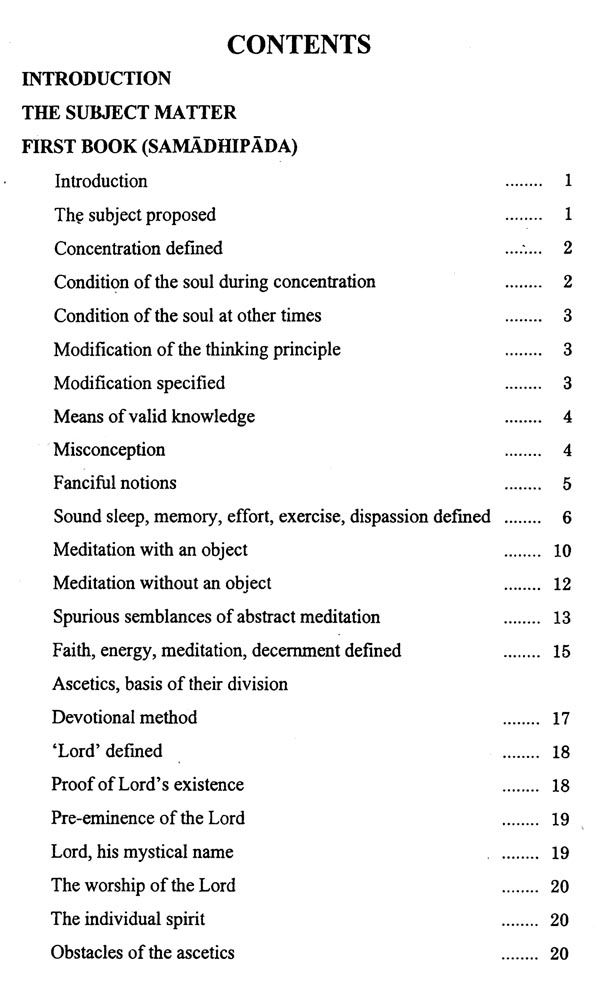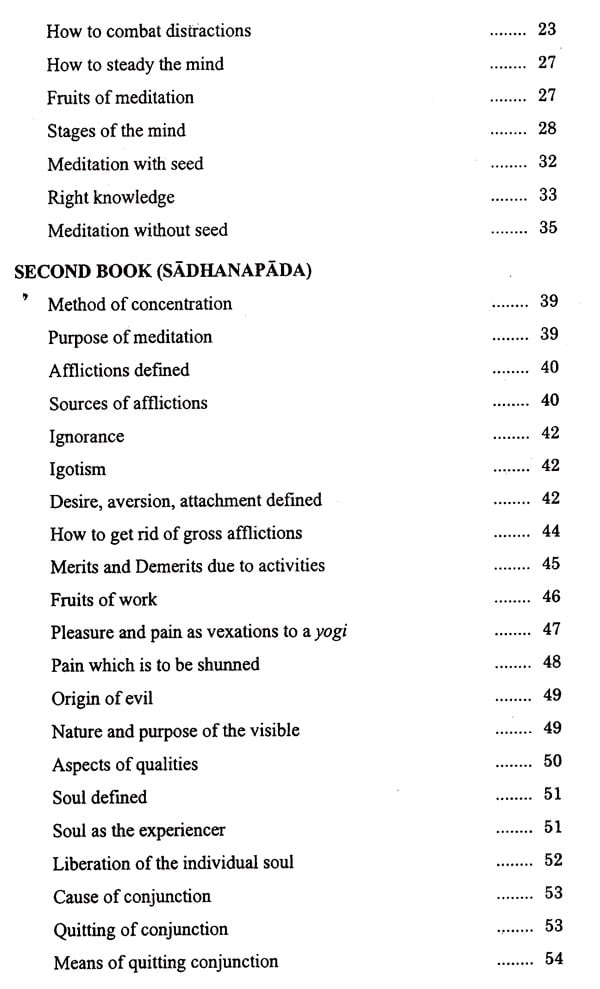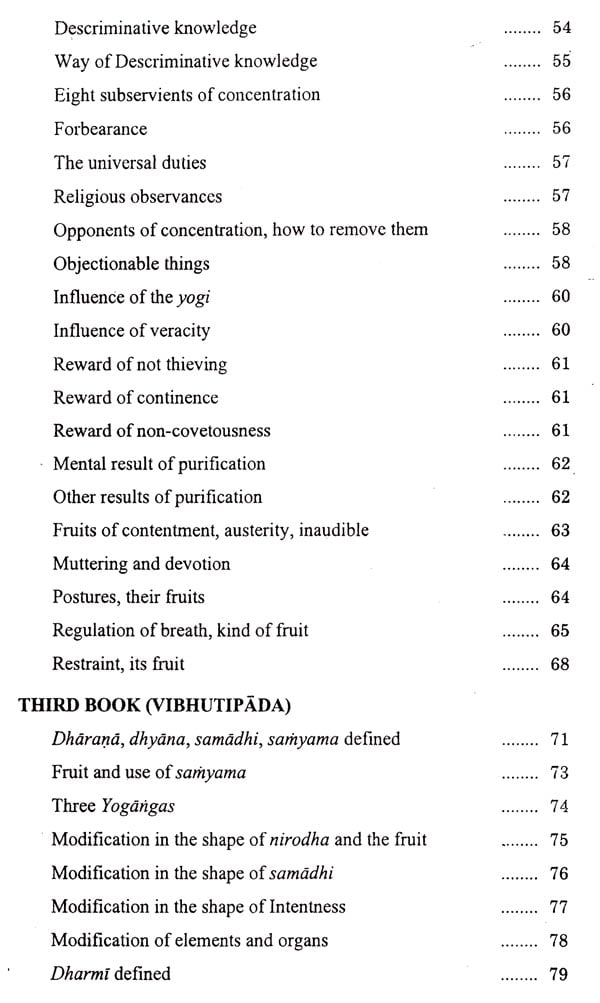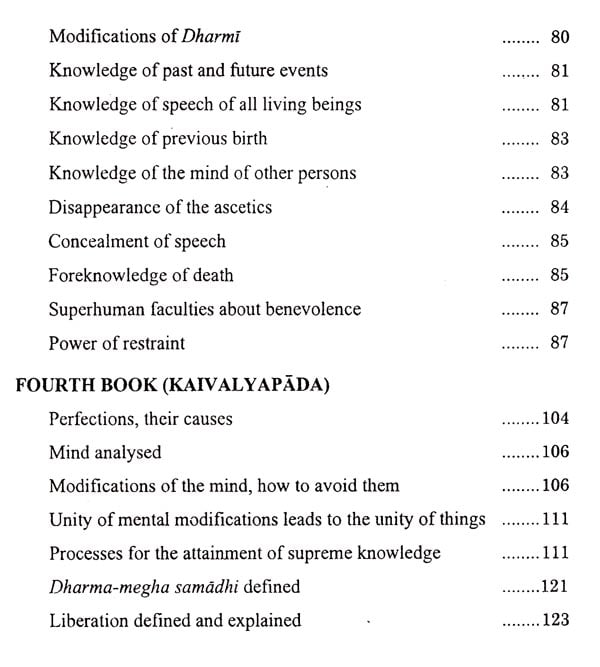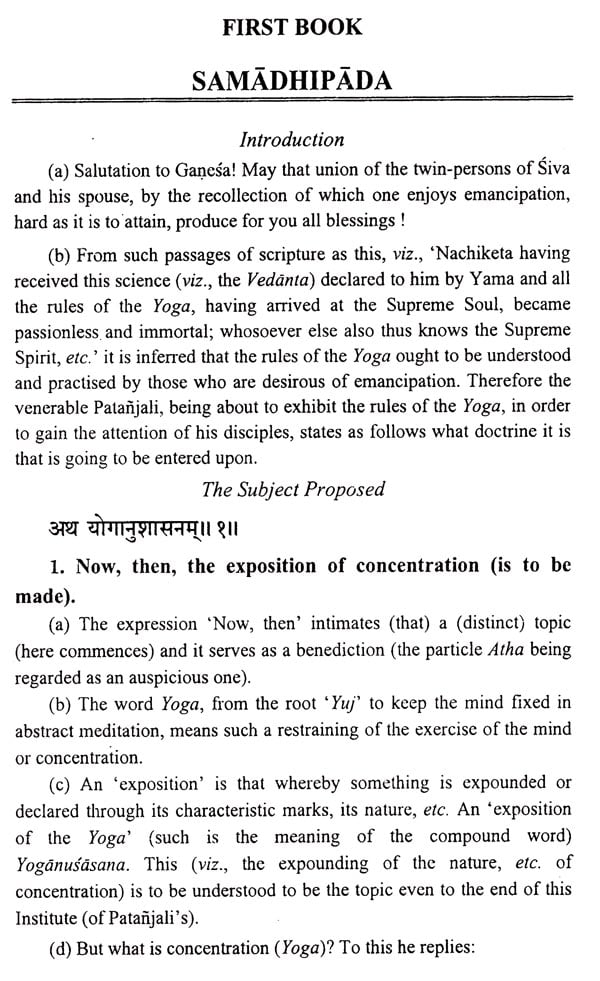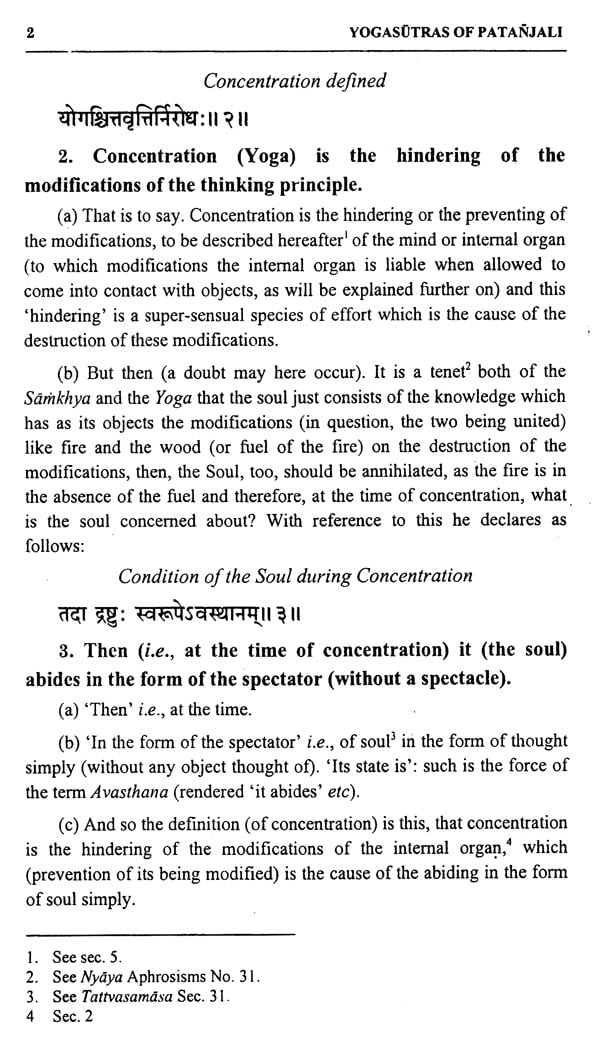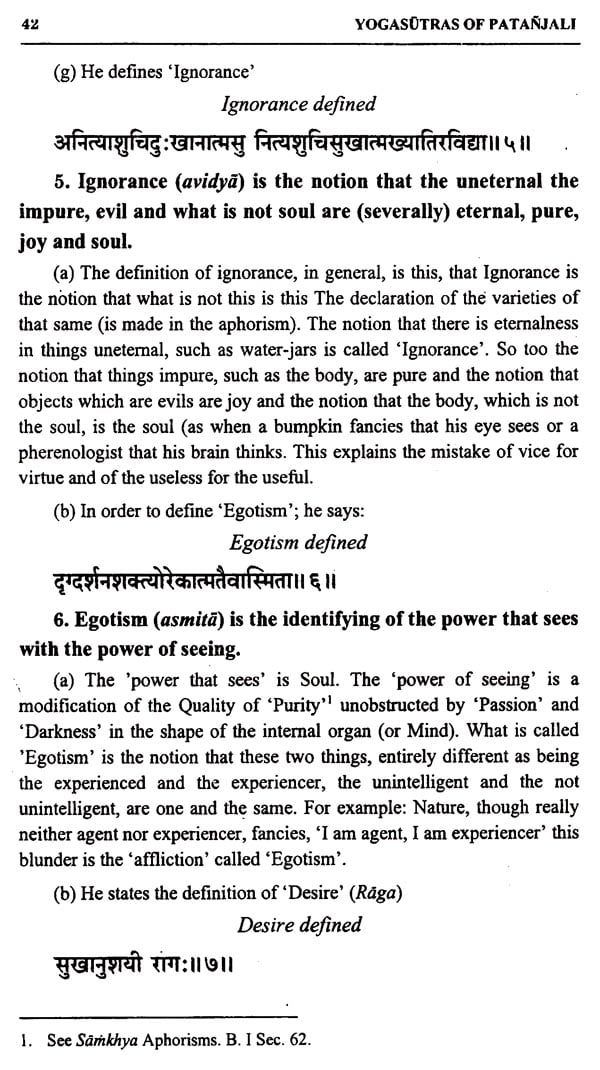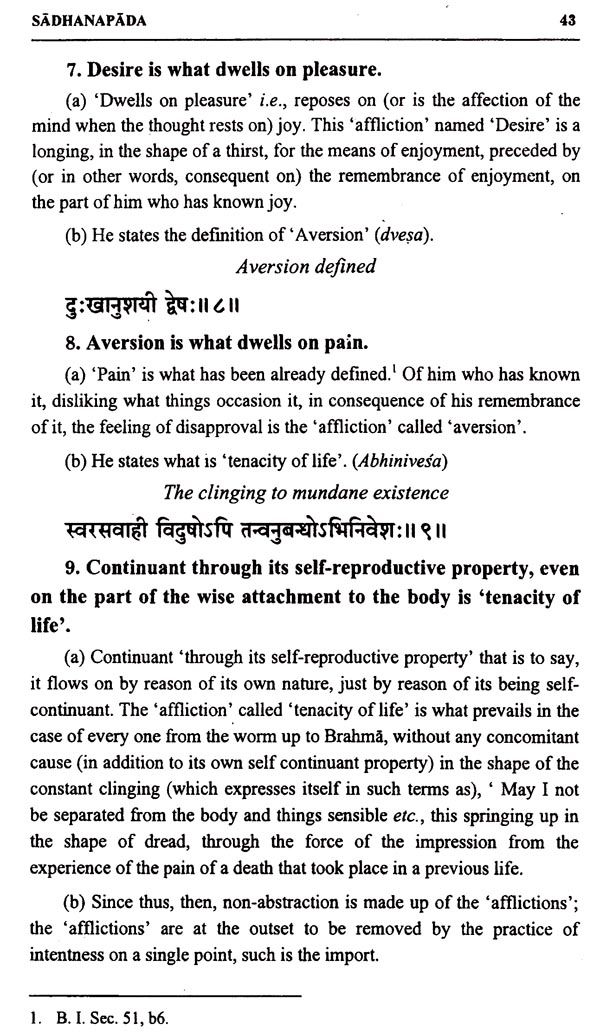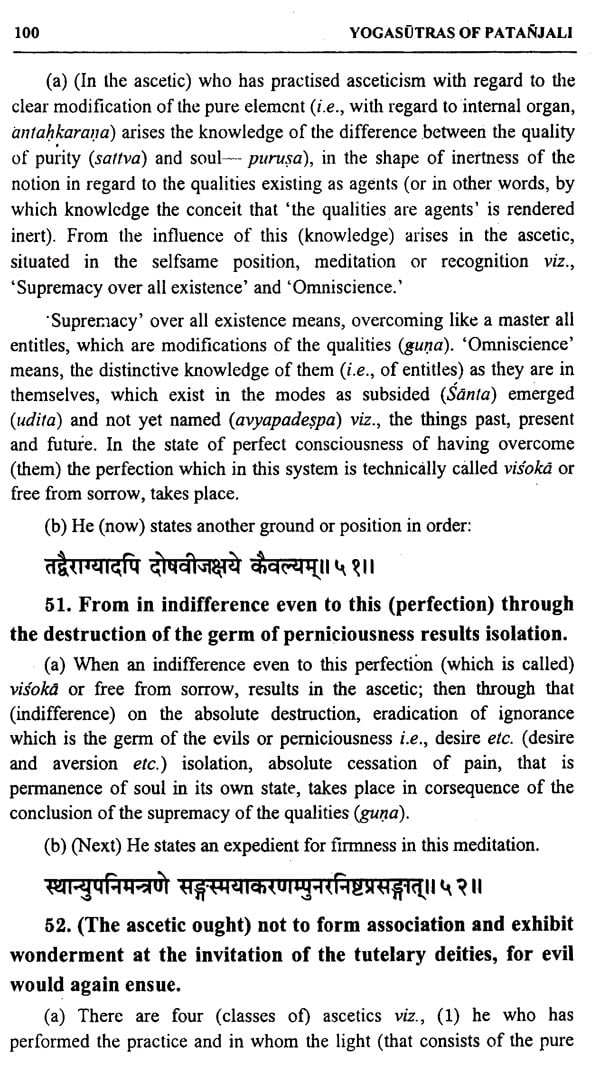
Yogasutras of Patanjali (Ballantyne and Shastri)
Book Specification
| Item Code: | NAR486 |
| Author: | Asoke Chatterjee Sastri |
| Publisher: | Parimal Publication Pvt. Ltd. |
| Language: | English |
| Edition: | 2021 |
| ISBN: | 9788171100194 |
| Pages: | 170 |
| Cover: | HARDCOVER |
| Other Details | 9.00 X 6.00 inch |
| Weight | 320 gm |
Book Description
The yogasutra of Patanjali is an original work , as accepted by scholars and a matchless masterpiece with very profound meaning. These sutras on which the Indian Yoga Philosophy is' based were written by Patanjali and also served to develop Samkhya Philosophy. There are commentaries on these sutras, one Yoga-Vairtika by Rajanfartanda by Rama Ramga Malla.
The present book incorporates the yogasutra of Patanijali with Bhojavrtti called Rajamartanda bcing an English version. The book is divided into four padas-samadhipada, Thanapada, vibhatipcida and kaivalyapada. In the first padp the nature of Yoga with its divisions, aim, mind and its actions have been delineated. The second pada describes the advices of meditation, its cause and practices. There are means of the accomplishment produced from the practice of Yoga as is explained in the' third pada. In the last pada mention has been made of nirmanacitta for five types of accomplishment. The present attempt is ; made even more useful as it contains a comprehensive introduction by Prof. Asoke Chatterjee, an appendix and an index.
It is mentioned in the smrti of Yajnavalkya and in Mahabharata that the Hiranyagarbha, described at the beginning of creation of the universe, is the introducer of yoga at first. It becomes clear from the word anusasana mentioned in the first sutra of the yoga of Patanijali atha yoganukisanam' that Patanijali is not the introducer of the yoga philosophy because the meaning of the word anusilsana is representation of a conclusion mentioned earlier. Many learned scholars like Samkara have cited the instance of Hiranyagarbha yoga in their own books. Thus, it appears that before Patanjali the yoga of Hiranyagarbha was in existence. Even in two verses of the Visnupurana mention has been made of 'thus thinking the saying of Hiranyagarbha' etc. The description of Hiranyagarbha yoga may be found in the Ahirbudhnyasarnhita. The yogasutra of Hiranyagarbha was elaborate and prominent. This is why, Patanjali has composed the Yogasutra after extracting the substantial parts of it. Thus the yogasutra of Patanjali is the follower of Hiranyagarbha yogasutra.
According to some other scholars, at the beginning of creation Hiranyagarbha introduced advices of yoga to the sages, i.e., in pursuance of his impulsion, the prudent sages learnt yoga by their own keen intelligence. During that time the art of yoga was not in written form. It was taught and learnt by the preceptors and their disciples in regular succession. In this way, the yoga spread first by series of preceptors. Sometime after the seers (yogin) wrote these and composed the Hiranyagarbha yoga. But as it was elaborate and complicated the human society did not give due honour. So, for the purpose of preaching, spreading and preservation; Patanjali has made it in the book-form of yogasutra.
Since the time of the vedas the practice of yoga has been continuing. The materials of yoga are sufficiently available in the Vedas, Brahmans, Upanisads and Puranas. It is clearly indicated in the book Vaidik Yogasutra by Harisamkara Joshi. In many places of the Rgveda, SAmaveda, Yajurveda and Atharvaveda yoga has been mentioned. After examining some mantras of the Vedas (RV. 1.5.3, 1.18.7, 1.30.7, SV. 163, 742, 43, VS. 1.14, AV. 20.26.1 etc.) it may be found out that yoga had come in to existence at the time of the Vedas. During that time yoga was not applied for the purpose of emancipation, but the word yoga was used for the prayer of god, unceasing happiness attainment of knowledge and peace.
In describing kriyayoga in the Agnipurana yoga has been described as the means of emancipation.
The union of individual self and Brahman has been described as paramayoga in the Garudapurana, An elaborate discussion of dhyanayoga is available in the fourteenth chapter of the Garudapurana. In other place description has been made of eight-fold yoga. It is also said in the Garudapurana that 'the knowledge of Samkhya, Yoga and hearing of the Sruti is essential for emancipation. Emancipation is possible only after deep meditation.
According to the Visnupurana, the mind should be restrained from the worldly materials and engaged in thinking of supreme soul. Thus, after attaining the Brahman the self becomes emancipated. The connection of Brahman and the mind which is moderated by self-control is yoga. This Purana prescribes yama, niyama, asana, pranayama, pratyahara, dhyana, dharana and samadhi for practising yoga. The dissolution of the concentrated mind in Brahman is what is called yoga in the Brahmapurana. In the thirty-ninth chapter of the Markandeyapurana, it is described how disease can be treated by yoga. This chapter is known as yogacikitsadhyaya.
In the Srimadbhagavata Lord Krsna told Uddhava: 'I have given advices of three yogas, knowledge, deeds and devotion for the good of mankind. There is no other alternative of betterment save these three means'. In the Devi bhagavata also jiidnayoga, karmayoga and bhakti-yoga have been mentioned as the means of attainment of emancipation. Mahadeva said that yoga is nothing but union of individual soul and supreme soul. By yoga the gloom of ignorance becomes destroyed at once. Even in the Bhagavadgita the word yoga has been used on several occasions.
It is therefore apparent that yoga was introduced at an ancient period and gradually it came to light. But as it had no written from its history of gradual development was not understood. Before the yogasutra of Patanjali descriptions relating to yoga remained hither and thither as per context. It had got its scattered condition because it was not graspable to the common people. For making it approachable to the people Patanjali collected these together and gave proper instruction. He after realising the conclusions of yoga in his time arranged these systematically and prepared a book called yogasutra.
According to S.N. Dasgupta, Patanjali has given the sutra form to the arguments relating to yoga in the book Yogasutra. Vacaspati Misra and Vijnanabhiksu also admit that Patanjali is not the introducer of yoga reasoning but he is the compiler.
